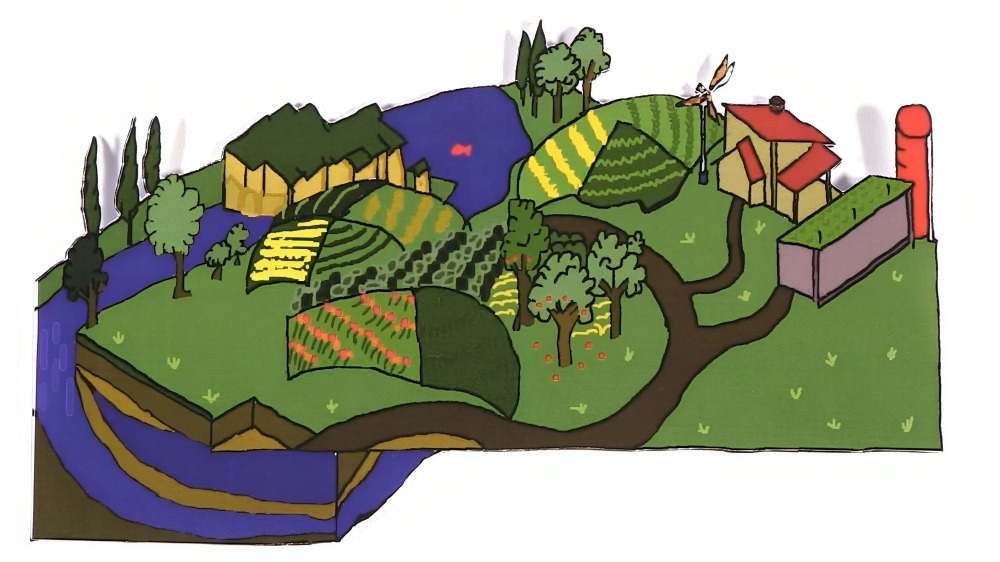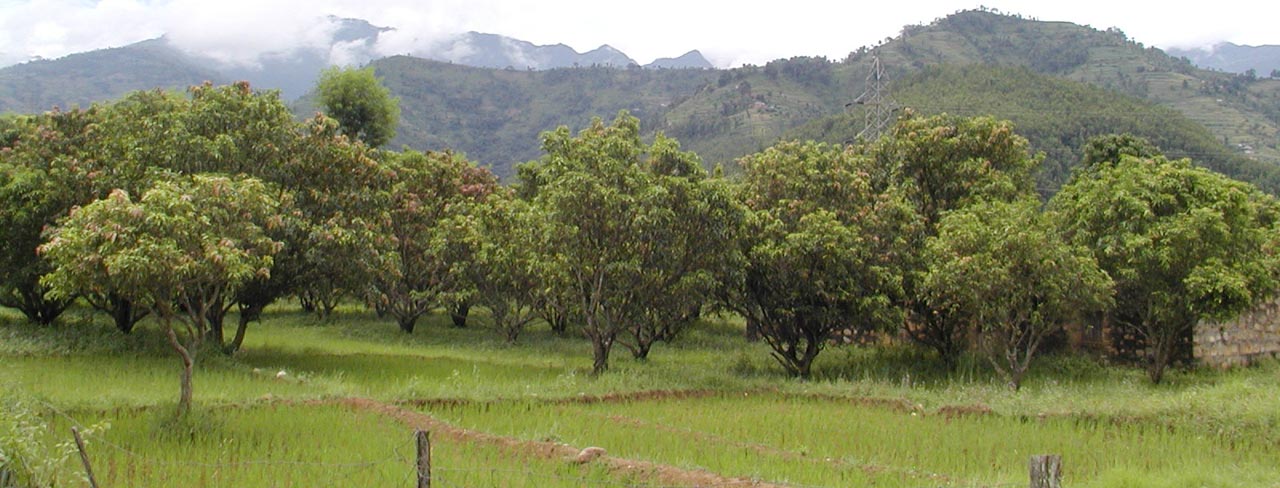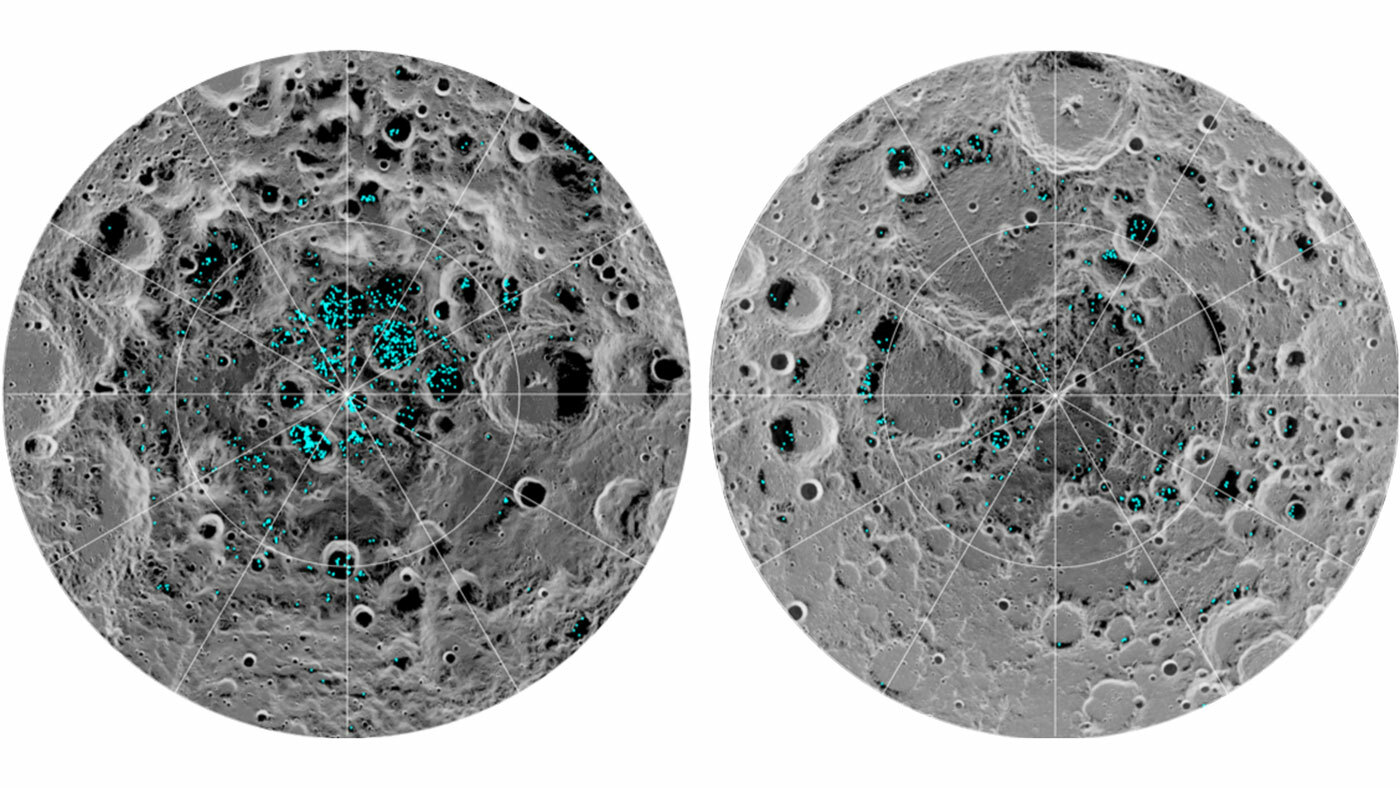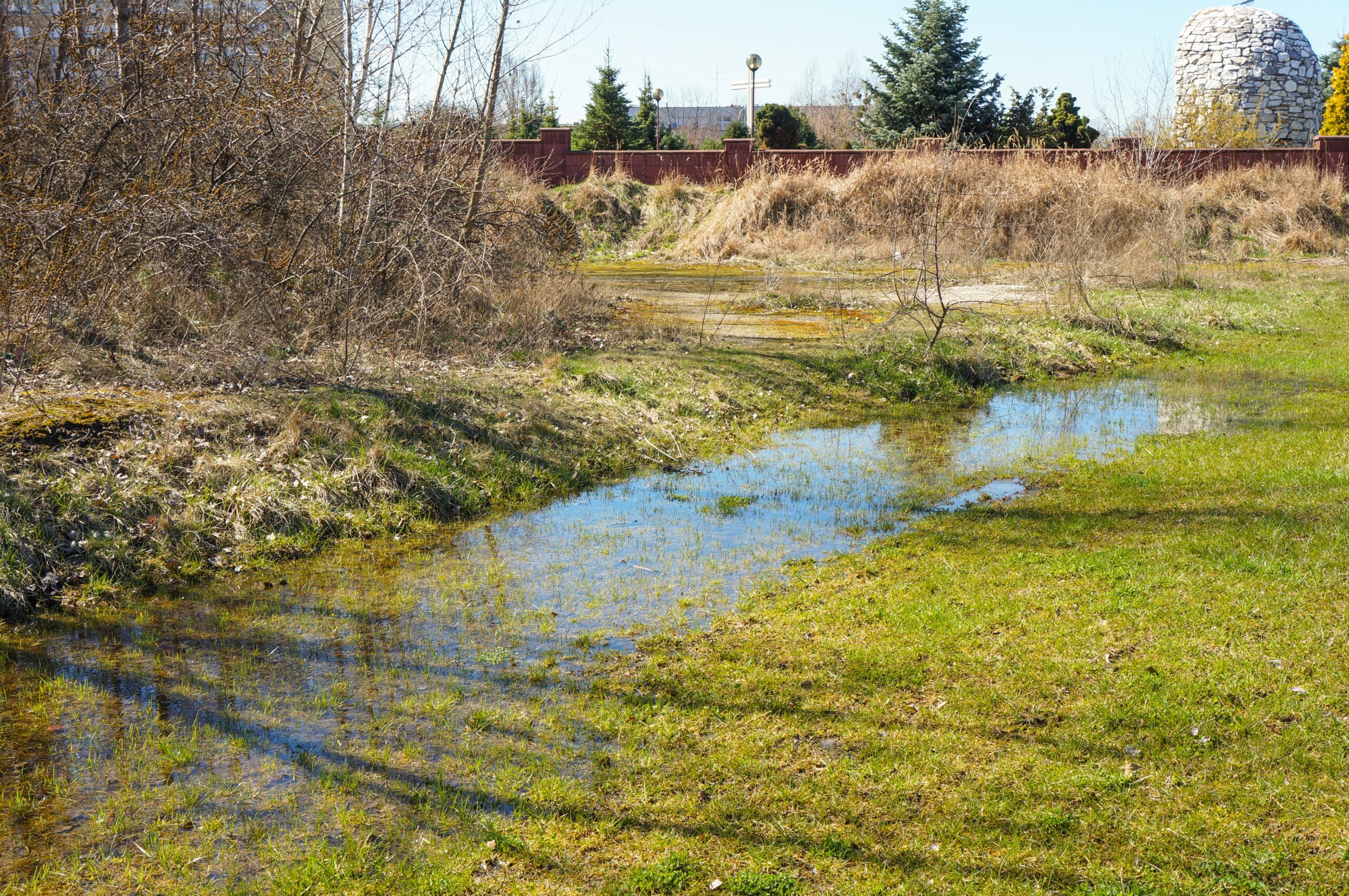Rainwater Harvesting Landscape by Claudia Lasprilla Pina, Rahel Birhanu Kassaye and Ruth Schaldach is licensed under CC BY-SA 4.0
Read about Land-Based Rainwater Harvesting Techniques and it's role in agriculture, managing stormwater, preventing floods and controlling erosion
1. Micro-Catchment Rainwater Harvesting
- Strip catchment tillage
- Contour or keyline barriers
- Basin systems
2. Macro-Catchment Rainwater Harvesting
- Hillside systems
- Stream-bed systems
- Ephemeral stream diversion systems
Rainwater Harvesting: Nurturing Sustainable Agriculture
Land-based rainwater harvesting, or rainwater collection systems is one solution to the water scarcity problem. This involves the collection of water and its subsequent storage either in reservoirs or directly within the soil. In arid and semi-arid regions around the world, water scarcity poses a significant constraint on food production, especially in areas primarily dependent on rainfall for agriculture. Rainwater collection system hold the promise of offering a sustainable water source while simultaneously addressing food security, soil erosion mitigation, and flood hazard management, provided they are designed effectively. Consequently, land-based rainwater harvesting systems have the capacity to substantially enhance crop yields. This review explores various techniques for both micro and macro-catchment rainwater harvesting, with a specific focus on design considerations crucial for ensuring the functionality of these systems. Nevertheless, despite the potential to bolster agricultural productivity and thereby increase food availability, the adoption of these techniques among farmers remains less widespread than it could be.
Water scarcity affects more than 40 percent of the global population. Regions with limited water resources face significant challenges, including crop failures, soil erosion, and, when precipitation occurs, the risk of flooding.
This rainwater harvesting method can be classified into micro-catchment and macro-catchment harvesting.
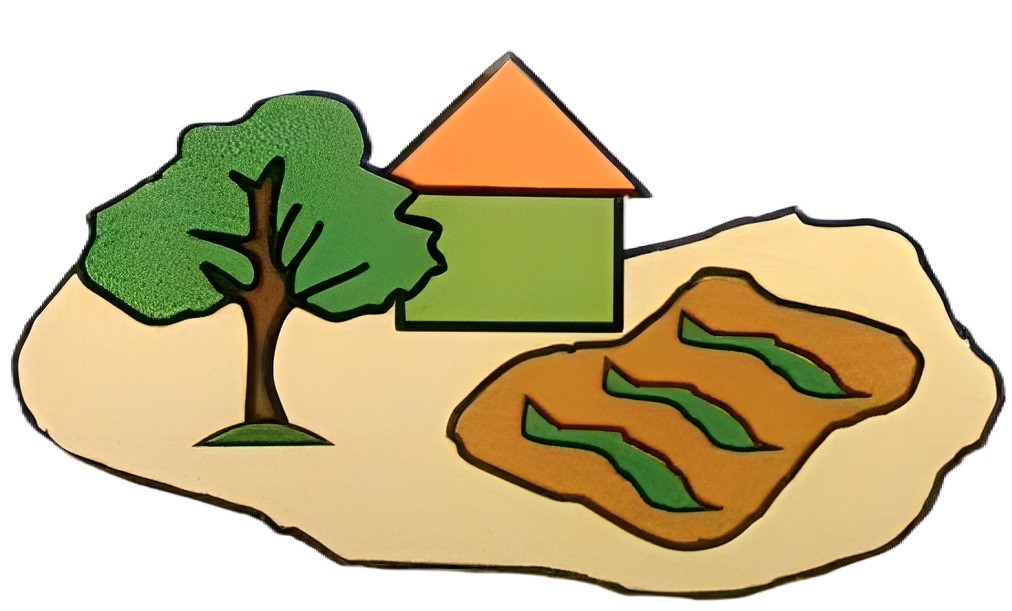
Micro-Catchment
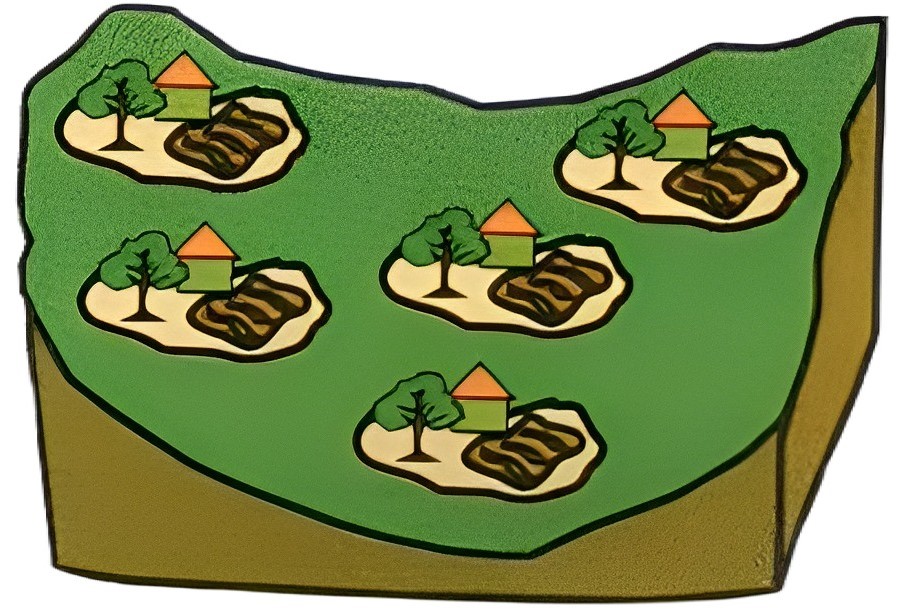
Macro-Catchment
1. What Is Micro-Catchment Rainwater Collection Systems?
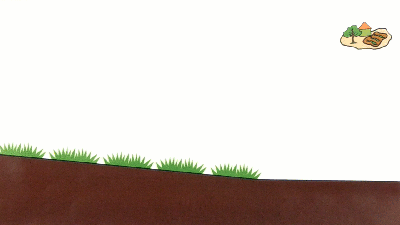
In micro-catchment rainwater collection system, rain falls onto a small catchment area and flows directly to the adjacent cropped basin, where a single tree, bush or row of crops is planted. The objective is to retain water within the root zone, ensuring a consistent water supply for plants during their growth cycle.
Several techniques can be employed for micro-catchment rainwater harvesting.
1. Strip catchment tillage
2. Contour or keyline barriers
3. Basin systems
1.1 Strip catchment tillage
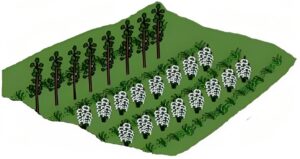
Strip catchment tillage involves the arrangement of cultivated crop rows interspersed with uncultivated grass rows. In this setup, the grass serves as a rainwater collection surface, directing water flow towards the adjacent crop rows.
1.2 Contour or keyline barriers
Contour or keyline barriers are constructed perpendicular to the slope. Their function is to intercept rainfall, encourage infiltration, and to reduce soil erosion. Barriers are built from vegetative material in trashlines, stones or soil. Other cross-slope systems are swales and living terraces.
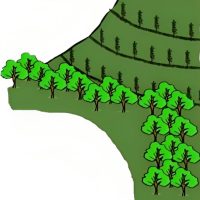
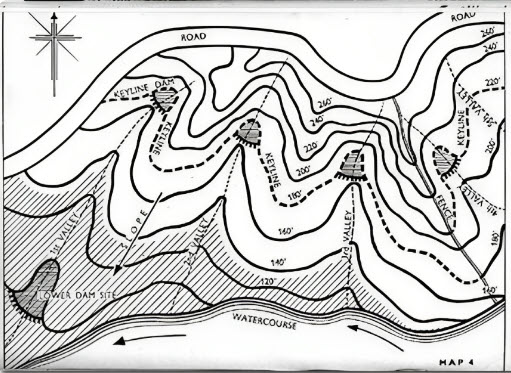
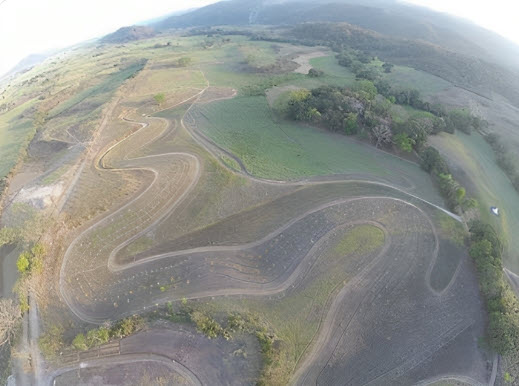
1.3 Basin systems
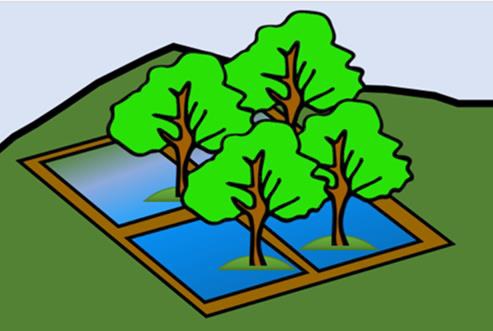
Basin systems are closed diamond or square shaped catchments, surrounded by low earth bunds. Water falling into this basin is channeled to the lowest point, where ideally food trees are grown.
2. What Is Macro-Catchment Rainwater Collection Systems?
In macro-catchment rainwater collection system, the catchment area lies outside the application area. This results in rain water being collected away from its point of use. The catchment area’s land cover can be manifold, encompassing cultivated land, roads, or residential areas.
Frequently, these catchment areas are situated on slopes of hills or mountains. To ensure a water supply during dry periods, the collected rainwater can be directed towards groundwater replenishment or stored in various systems, such as open farm ponds or closed underground tanks.
Macro-catchment rainwater harvesting systems can be broadly categorized into three groups.
- Hillside systems
- Stream-bed systems
- Ephemeral stream diversion systems
2.1 Hillside systems
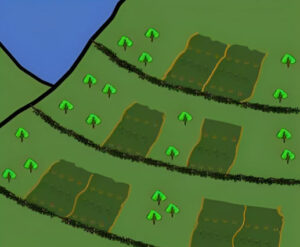
Hillside systems where water flows downhill and accumulates at barriers, serving purposes like crop irrigation and groundwater replenishment.
2.2 Stream-bed systems
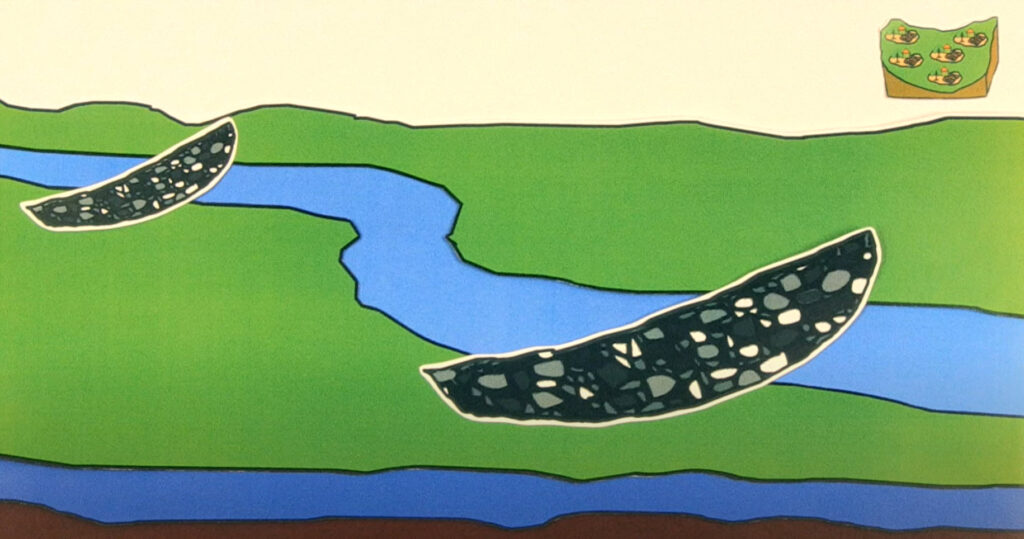
In stream-bed systems, structures such as sand dams or check dams are constructed across temporarily flooded channels. These systems are constructed in a sequential manner, starting from the upstream and progressing downstream. Their purpose is to mitigate the intensity of water flow, facilitate water infiltration, and manage erosion.
2.3 Ephemeral stream diversion systems
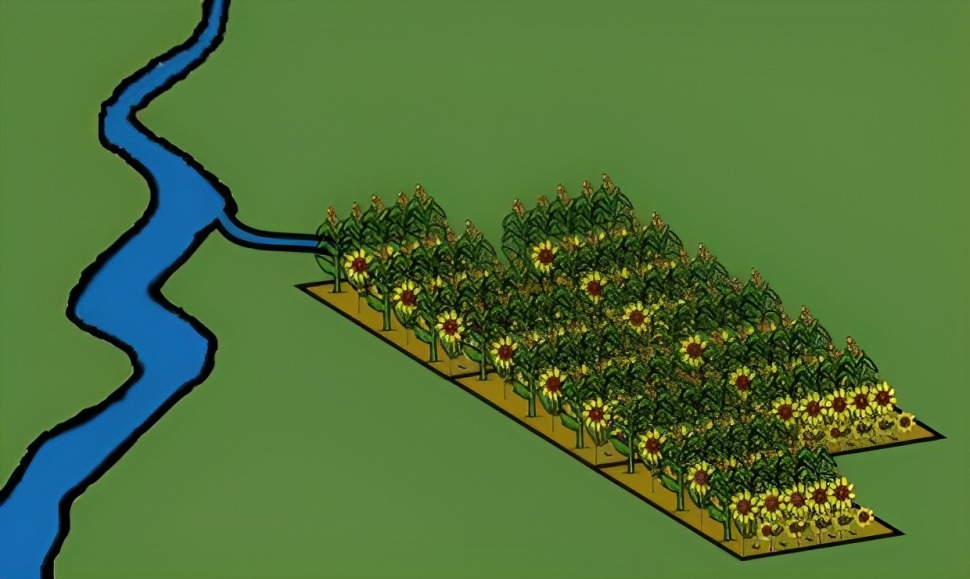
Ephemeral stream diversion systems redirect water away from periodically flooded channels towards large, lower-lying regions. This redirection allows for water to seep into the ground, ensuring sufficient moisture for crop cultivation.
Conclusion
Land-based rainwater harvesting contributes to the reduction of soil erosion and flood occurrence, while also enhancing groundwater recharge.
Where climate change and mismanagement threaten the availability of water as a resource, rainwater harvesting systems can help increase agricultural activity and thus food availability.
Ready to take a QUIZZ!
Test your familiarity with the various Elements of land-based rainwater harvesting systems
Rainwater harvesting systems on land offer a multitude of techniques that, when blended effectively, yield outstanding results. When utilized correctly, these systems offer advantages beyond simply gathering rainwater; they play a crucial role in assisting farmers in adapting to the challenges posed by climate change. Enhancing water utilization efficiency can lead to higher biomass production and improved erosion control.
Take a moment to explore the interactive tool below and test your familiarity with the various components of land-based rainwater harvesting systems. Match the correct name with the corresponding element in the image. If you encounter any difficulties, don’t hesitate to go back to the blog and read again to get familiar!
References
- e-learning project of Hamburg University of Technology (TUHH) in cooperation with Hamburg Open Online University (HOOU)
- All the images used in this blog post are sourced from Rainwater Harvesting Landscape by Claudia Lasprilla Pina, Rahel Birhanu Kassaye and Ruth Schaldach is licensed under CC BY-SA 4.0

